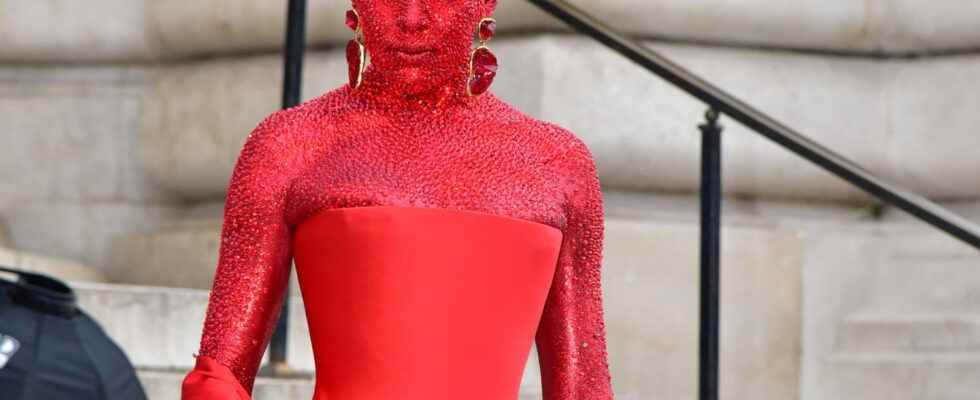Trypophobia refers to the phobia of holes. The red dress worn by American singer Doja Cat during the Schiaparelli show in Paris on January 2023 paralyzed trypophobes who saw a multitude of holes in it…
Trypophobia means hole phobia or the excessive fear of a person in the presence of any holefrom a crater to a piece of Swiss cheese. It’s the effect or rather the harm prompted by the red dress worn by American singer Doja Cat during the Schiaparelli fashion show (of which she is the muse) on January 23, 2023 in Paris. On social networks, many trypophobic Internet users reacted “My sweaty trypophobia” shared ilhenaaa on Twitter, “Poor me who suffers from trypophobia” exclaimed Nezuko, “it disgusts me” added another. There dress of Doja Cat whose real name is Amala Ratna Zandile Dlamini is actually covered with 30,000 Swarovski crystals underlined the Artistic Director of Schiaparelli Daniel Roseberry, at the origin of its creation. The phobia of holes results in reactions of nausea, migraines, tremors or even panic attacks. It would also be the most widespread phobia on the planet, Argentine doctors having notably shown that it affects more or less seriously 18% of women and 11% of men.
Hole phobia has the scientific name of trypophobia.
Trypophobia is a little known but relatively common specific phobia. It is characterized by panic and unexplained fear of holes. Holes that can be seen in a honeycomb, a sponge, a piece of cheese or a chocolate bar with puffed rice. “There is also a certain form of disgust for infectious diseases and decomposition, especially skin diseases.“, adds Carine Grzesiak, psychologist.
“Trypophobia can lead to a very uncomfortable or even painful emotional reaction to images that may represent holes. bodily symptoms such asan increase in heart rate, itching or even an impact on the respiratory rate, can manifest”, explains the psychologist. The subject also tends to avoid the situation or the object at the origin of his phobia.
“Researchers have highlighted a possible link with a flight reflex in front of poisonous animals, inherited from our ancestors“, notes the psychologist.
Like other phobias such as the phobia of emptiness, clowns, feet, trypophobia is treated by following a behavioral and cognitive therapy (TCC), with an exposure protocol in a reassuring setting in order to gradually eliminate anxiety. The fact of being voluntarily confronted with the phobic subject regularly and gradually also helps to make the fear disappear. “I’hypnosis is also an effective tool to dissociate the patient from his phobia, he can thus regain suppleness and flexibility in his daily life. Finally, the Ritmo and EMDRtrauma management tools can also be used depending on the origin of the phobia“, specifies Carine Grzesiak.
“To validate trypophobia, the patient is exposed to images, photos and videos representing holes in order to see if this has an emotional impact, or even anxiety, on him. comments the specialist.
Thanks to Carine Grzesiak, psychologist.
